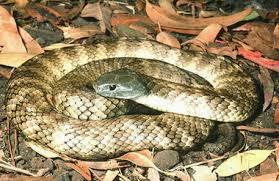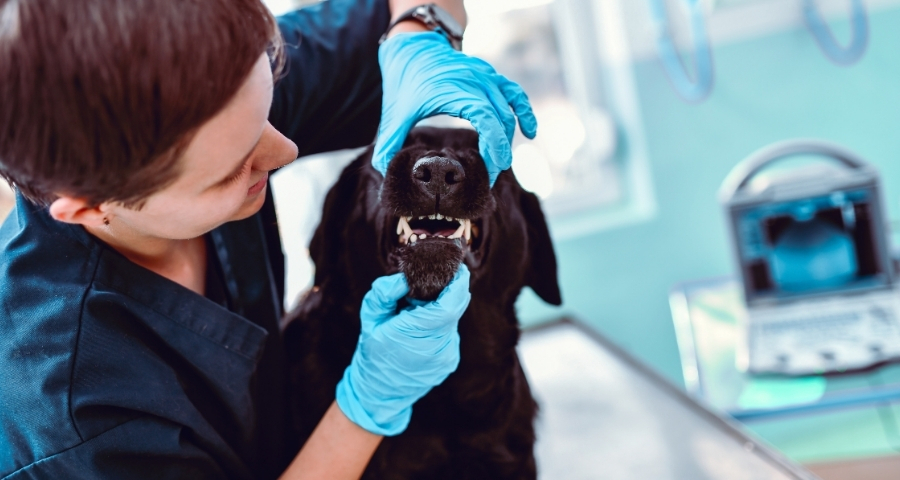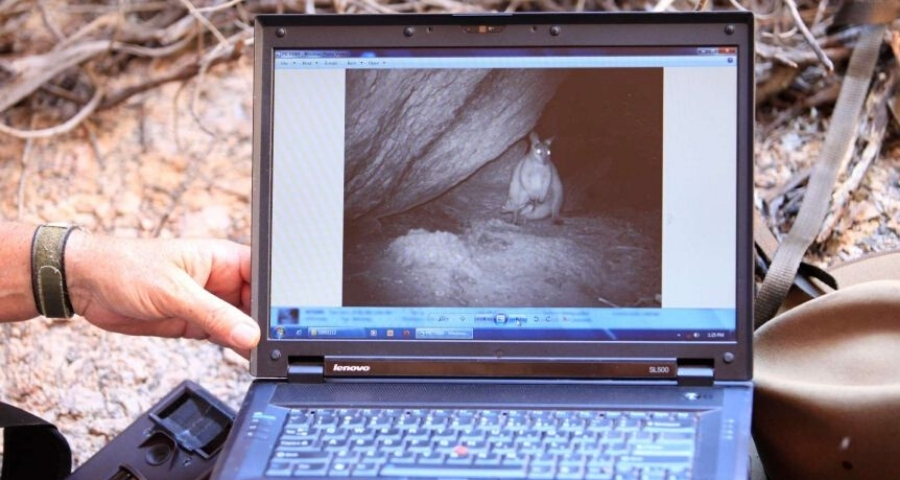| |
|
|
| |
Mira Mar Veterinary Hospital
|
|
| |
|
|
| |
|
|
| |
|
|
|
|

|
| |
February Newsletter
|
|
| |
|
|
| |
Well we can't quite believe it is February already!
It continues to be very busy for us all at Mira Mar Vets.
Unfortunately we have seen a few snake bite cases in the past weeks, so please keep your furbabies close and away from those nasty slithery creatures! It is a worrying, traumatic and potentially expensive process if your pet is bitten by a snake, we would all very much prefer it if a snakebite did not occur in the first place.
If you suspect your pet has been bitten by a snake, please keep yourself and them calm, call us as soon as you can, and get them to us quickly! There are no home remedies for a snake bite, the only possible treatment is an appropriate dose of anti-venom, and the quicker this is in their system, the better a chance of a successful outcome. |
|
|
|

|
| |
Good Luck Dr Farand!
|
|
| |
|
|
| |
This month we wish the best of luck to Dr Farand, who is undergoing a shoulder operation in Perth. He will be out of action for a few months while he recovers, but we hope to see his smiling face back in the clinic very soon.
Good luck Dr Farand, and have a speedy recovery! |
|
|
|

|
| |
The Ins and Outs of Vaccination
|
|
| |
|
|
| |
Pet vaccination protocols can be confusing, particularly in puppies and kittens! The vaccine schedule recommended for your pet depends on their type, age and lifestyle.
Why is it recommended to wait until 16 weeks old for the final puppy/kitten vaccination?
This recommendation is based on studies showing that some animals still have significant levels of maternal antibodies in their bloodstream at 12-14 weeks old (and sometimes longer), which can “block” your pup or kitten from responding properly to vaccination and gaining long-term disease protection. Maternal antibodies are a temporary passive immunity system passed from mother to baby. Whilst they provide very young pups or kittens with protection against disease, they eventually wane, leaving the growing animal unprotected.
Vaccination schedules are therefore designed to give your puppy or kitten regular opportunities to effectively form their own long-term disease immunity, as their maternal antibodies naturally decrease.
Does my animal require booster vaccinations every year?
After the first year of puppy or kitten vaccinations, booster vaccinations are advised every one-to-three years, depending on the vaccine types used. We will make specific recommendations for your pet based on their lifestyle, e.g. if they are indoors or outdoors, if they go to boarding or travel interstate, or if they live in a rural environment.
If your pet suffers from a health issue that makes vaccination less safe for them (e.g. an autoimmune disease or rare vaccine allergy), we may discuss special blood tests called “vaccine titres” to check your pet’s existing immunity levels.
What if my animal is overdue for vaccination?
If your pet is overdue for vaccination, call our friendly team for advice. Pups or kittens may need two additional booster vaccines to get back on track, whereas previously vaccinated adult animals may be OK with just a single booster. |
|
|
|

|
| |
Desexing: A stitch in time
|
|
| |
|
|
| |
Desexing of male and female animals (castration and ovariohysterectomy) are two of the most common procedures that we perform in veterinary practice.
It’s a good idea to desex your pet if you don’t have the time, knowledge or finances to responsibly breed from them. Routine care of a female and her pups (including vaccinations, special diets and parasite control) can be expensive and time-consuming, and any medical birthing or puppy health complications can potentially cost thousands of dollars in emergency fees.
Local councils frequently encourage desexing by offering cheaper registration fees for desexed pets – this is done to help address the issues of unwanted pets in shelters, and feral cats and dogs devastating our wildlife.
Correctly-timed desexing also provides benefits such as:
Prevention of pyometra (womb infection) or uterine cancers in females.
Prevention of testicular cancers in males.
Reduced risk of urine spraying in male cats.
Reduced risk of problem urine marking or humping in male dogs.
Not having to manage female oestrus (heat) periods, where there is a risk of accidental mating, and sometimes yowling theatrics in female cats!
Reduced risk of male rabbit territorial aggression.
In large breed dogs, we may make a medical recommendation for later desexing at around 12-18 months old. Recent studies indicate this helps with optimal musculoskeletal development in these dogs, reducing the risk of future injuries such as cruciate ligament tears.
When your pet is with us for desexing, we can sometimes perform other beneficial procedures under the same anaesthetic if required, e.g. removal of retained baby teeth, repair of umbilical hernias, gastropexy in giant breed dogs to reduce risk of stomach twisting (GDV), or removal of hind dewclaws.
If you have any further questions about desexing your pet, give our team a call! |
|
|
|

|
| |
Picking the best diet for your pet
|
|
| |
|
|
| |
Perusing the vast array of commercial foods available for cats and dogs can rapidly become overwhelming! Should your pet be eating a grain-free diet, a raw food diet, a home-cooked diet, a veterinary diet or just a regular supermarket diet?
Different pets require different diets based on:
- Breed – Toy breed dogs generally require smaller biscuit size.
- Age – Puppy or kitten diets have higher levels of protein and fats, and higher levels of balanced calcium and phosphate for bone growth.
- Species – Cats need specific feline diets due to their requirement for meat protein and taurine supplementation.
- Activity levels – Inactive pets require lower calorie diets to prevent weight gain, whilst working dogs may need high energy diets to maintain weight.
- Any dietary allergies – Food-allergic pets require a novel protein or hypoallergenic diet for digestive/skin health.
- Special medical needs – e.g. Cats with chronic kidney disease benefit from a prescription diet, containing reduced protein, salt and phosphate levels to reduce kidney work-load.
When selecting a diet for your pet, ensure the diet is complete and balanced, meets food safety guidelines, and is designed for your pet’s species and age. Our preference is generally for the “veterinary brand” foods, as we are confident regarding the long-term nutritional research that has gone into their development. However, we acknowledge that some pets prefer the interest of a home-cooked or raw diet, or will have dietary intolerances which require a more tailored diet.
If you prefer to give your pet a home-cooked or raw diet, we recommend consulting with a qualified veterinary nutritionist to ensure the diet is balanced – please ask our team for recommendations.
Lastly, if anyone in your household is immunocompromised, it is recommended to avoid feeding your pet any raw meat products (including dried jerky treats), due to high risk of bacterial contamination. |
|
|
|

|
| |
What does a vet check in a physical exam?
|
|
| |
|
|
| |
Whether your pet is seeing us for a routine check or an episode of unwellness, our vets aim to perform a thorough examination. In combination with the information you provide to us about your pet’s home care and activities, this check helps us to quickly get a good idea of their health status.
Whilst each vet has their own routine for performing a physical examination, a common procedure involves:
- Looking at your pet’s behaviour. This tells us about your animal’s mental health, and also if they seem friendly, anxious or anti-vet!
- Watching your pet sit, stand and walk, to see if there are any signs of pain, stiffness, weakness or wobbliness.
- Checking your pet’s face for any signs of eye or nose discharge, swelling or asymmetry.
- Checking your pet’s ears and eyes for any signs of inflammation, infection, lumps or other disease.
- Looking in your pet’s mouth to grade your pet’s dental health and check for masses, and also check their gums for signs of dehydration or anaemia.
- Feeling your pet’s superficial lymph nodes – any enlargement can indicate inflammation, infection or even tumours.
- Listening to your pet’s chest – here we listen for normal heart and lung sounds and rhythms.
- Feeling your pet’s belly to check for any enlarged or painful organs.
- Feeling your pet’s body for any skin or muscle lumps.
- Checking your pet’s skin for any lesions or parasites.
- Doing an orthopaedic examination to check for any joint pain or stiffness.
- Taking your pet’s temperature to see if they are fevered or cold.
Sometimes, we may be able to reach a diagnosis from examination and history alone (not quite Doctor Dolittle, but we’re working on it!). Other times, your pet may need further diagnostic tests to help confirm any suspected issues. Either way, your pet can rely on us for a thorough check-up! |
|
|
|

|
| |
Animal News In Brief
|
|
| |
|
|
| |
Image source: ABC News
Upsurge in pets means shortage of vets
The desire for pet companionship has catapulted through the COVID-19 pandemic. Prior to the onset of the pandemic, puppies and kittens were a mere twinkle in our eyes. For the past three years, the Federal Government records show a nationwide shortage of vets each year. Now more than ever, vets around the country are under the pump and without the resources to keep up. The burden of providing expert veterinary care for each and every pet, against the surge in new furry friends is impacting the veterinary industry across the country. So, what can be done to address this? Two potential ways - inclusion of the veterinary profession on the national Skills Priority List and incentives by the Federal Government to attract vets to regional and rural areas around Australia. As vets are always there to give support to our pets, it’s now time for action to give support to our vets.
Read more about the shortage across the veterinary industry here and the impact of the surge in new puppies on veterinary wellbeing here.
-----
I spy with my AI something beginning with recovery
After almost three billion native animals were impacted by the Black Summer Australian fires, more than 600 cameras are set to be installed across the country’s most bushfire-affected regions. As part of WWF’s new ‘An Eye on Recovery project’, the Blue Mountains, East Gippsland, Kangaroo Island and South-East Queensland are each to be equipped with AI technology to help monitor the remaining wildlife and identify where further recovery support is needed. Thanks to financial support from Google, Kangaroo Island has already seen 100 installations of rechargeable, battery-operated cameras across the island, with the project expected to last for at least two years. After one of the most tragic events in history to happen to Australia’s wildlife, this project offers hope for a recovery.
Read more about the wildlife recovery AI surveillance program here.
-----
Pet care hack: home-alone trials for home-alone smiles
Over the pandemic, some of us have introduced a new furry friend to the family, while others have become better acquainted with their current pets. These pets, new and familiar, have grown accustomed to continuous care and attention. So what happens when we start leaving them alone more and more as things open up again? How can we help our pets to stay happy and mentally stimulated while we’re out and about? Happy Pets vet, Dr Bob Clippingdale, says that praising your dog if they’re in an excited state when you get home can in turn actually contribute to separation anxiety. Some things you can do before you head out include leaving the TV or radio on, spraying around pheromones for comfort and leaving your pet with a safe chew treat or food puzzle. Before you start leaving your pet for hours on end, give our February pet care hack of the month a go.
Pet care hack of the month: Trial periods. If your pet has never been left alone before, start by leaving them alone for very short ‘trial’ periods (e.g. 2 mins), and monitor them for any signs of distress (such as with a camera set up). If your pet is calm, gradually build up to longer periods of time apart over the following weeks. If your pet is showing signs of distress, cut back to shorter periods of time, where your pet can cope with you being away, and then gradually build up from there again. Vet-recommended behaviouralists or trainers can provide further help with this.
If your pet is obviously distressed as soon as you leave and won’t settle within a few minutes, book in a behavioural consultation with us to discuss options for anti-anxiety medications.
Read more about managing separation anxieties here. |
|
|
|

|
| |
Ear ‘ear! How to maintain your dog’s ear health
|
|
| |
|
|
| |
Dog parents, lend us your ears… Your dog’s ears, that is! Ear disease is a very common reason for consultation, so we’d love to pass on a few dog ear health maintenance tips.
General ear care
If your dog has upright ears, they are less likely to develop ear infections unless they have an underlying allergy trigger. Dogs with droopy or hairy ears however, may require more ear maintenance.
In terms of ear care, we generally advise only cleaning your dog’s ears if they are actually waxy. Unnecessary cleaning can make your pet’s ear canals too wet, causing irritation.
If your dog regularly gets waxy ears, ask us for a recommendation on the best gentle ear cleaner for them. There are plenty of YouTube demonstration videos on how to clean your pet’s ears (try searching for “Cleaning A Dog's Ears - Veterinary Training”), but ask our friendly team if you have any questions!
If your dog has hairy ears, we recommend only plucking the hairs if they are trapping ear wax or if your pet is prone to ear infections. Otherwise, leave the hair alone and just monitor your pet’s ears for any signs of problems. It is OK, however, to have a groomer clip the fur from around the ear canal opening to allow for better aeration.
Lastly, if your dog is prone to ear infections, take care to avoid their ears getting wet, whether by bathing or swimming. Having wet ear canals can increase the chances of their ears becoming irritated.
Ear checks
It’s a great idea to check your pet’s ears a couple of times a week – both the outer ear and the canal itself. This way you should be able to promptly spot any forming hair tangles, lumps, swellings or ear infections early on. |
|
|
|
| |
This email contains comments of a general nature only and is not intended to be a substitute for professional veterinary advice. It should not be relied on as the basis for whether you do or don't do anything.
All content © Pet Pack 2020 |
|
|
|
[Footer]
|